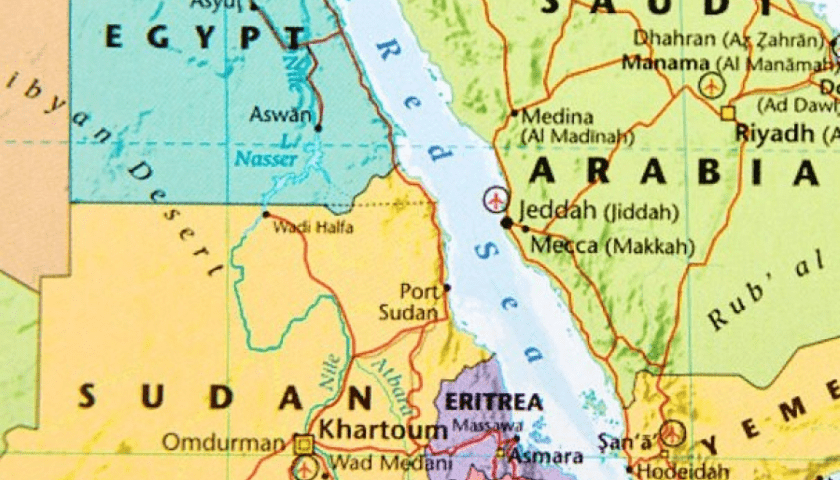Introduction
Have you ever heard about the Red Sea and want to explore its mystery? If so, you are going to know about it.
In this content, you will find each fact about the Red Sea and a mystery about “Why the Red Sea is called the Red Sea?”.
The world’s oceans and seas have plenty of chicanery charades, and one such enigma lies in the name of the Red Sea.
Despite its captivating beauty and historical significance, have you ever wondered why this body of water is named the “Red Sea”?
In this exploration, we delve into the origins of this peculiar name, unraveling the historical, geological, and cultural threads that have woven together to give the Red Sea its uncommon title.
Why is it called the Red Sea?
There are several theories and explanations for “Why the Red Sea is called the Red Sea?”.
One theory suggests that the name comes from the seasonal blooms of red-colored algae known as Trichodesmium erythraeum, which can turn the water into a reddish hue. These blooms are more common in the southern part of the sea and may have contributed to the name.
Another theory is that the name “Red Sea” is derived from the ancient Egyptian term “Reed Sea,” which refers to bodies of water with reed marshes.
According to this theory, reed marshes were there in the surroundings of the Red Sea. However, most of these marshes are gone due to human activities and environmental changes.
Additionally, some historical accounts and ancient texts suggest that the name “Red Sea” may have been influenced by the reddish or copper-colored mountains and cliffs. These mountains surround the sea in certain areas.
It is also worth noting that the name “Red Sea” has been used for centuries in various languages, including ancient Greek, Latin, and Arabic, indicating that the name has deep historical roots.
The Historical Tapestry
The name “Red Sea” has its roots in ancient history and is closely tied to the perceptions of early explorers and traders.
One prevailing theory suggests that the name “Red Sea” is a translation of the Ancient Egyptian term “Hemt,” which means “red land.”
According to this theory, the Ancient Egyptians used this term to refer to the desolate and mountainous terrain surrounding the sea.
The Red Sea has a broad and rich history, containing the rise and fall of ancient civilization. Its history has unrevealing truths about ancient styles, including significant trade routes.
It is a witness to the flourishing civilizations of Egypt, Phoenicia, and Greece. The Ancient Egyptians had a profound connection with the Red Sea, using it for trade and navigation.
The importance of the Red Sea showed when it acted as a pivotal link between the Mediterranean and Indian Ocean.
Its water connected East and West in a vibrant exchange. It is the water through which goods, culture, and trends are navigated from one place to another.
About Red Sea
The Red Sea is the first largest water body mentioned in history. It has the most salted water than other water bodies and is supposed to have the hottest seawater.
Topography and Features
- The Red Sea is characterized by its long and narrow shape, spanning approximately 2,300 kilometers (1,400 miles) long and averaging about 320 kilometers (200 miles) in width.
- Notable features include the Gulf of Aqaba, a northeastern extension that separates the Sinai Peninsula from the Arabian Peninsula, and the Bab el Mandeb strait, connecting the Red Sea to the Gulf of Aden and the Indian Ocean.
Where is the Red Sea?
Geographical Coordinates
- Latitude: Approximately 20° N to 15° S
- Longitude: Around 34° E to 42° E

Surrounding Countries
- Western Shore: Egypt, Sudan
- Eastern Shore: Saudi Arabia, Yemen
- Northern Tip: Jordan, Israel, and the Sinai Peninsula
Connectivity
- The Red Sea connects to the Mediterranean Sea through the Suez Canal, which runs along the northern part of the sea, allowing ships to navigate between the two bodies of water.
Geological Marvels
Beyond linguistic origins, the unique geography and geology of the Red Sea contribute to its intriguing name.
The sea is part of the Great Rift Valley, a tectonic plate boundary where the African and Arabian plates are gradually pulling apart.
This geological activity has led to the formation of deep trenches and volcanic features, enriching the waters with minerals and creating an environment that fosters the proliferation of certain microorganisms.
The Influence of Microorganisms
One of the key factors contributing to the Red Sea’s reddish hue is the presence of microscopic organisms known as phytoplankton.
These single-celled algae contain pigments that absorb and reflect sunlight, giving the sea its distinctive color.
During certain conditions, especially when phytoplankton populations are high, the Red Sea can take on a reddish or brownish tint.

Cultural Perspectives
“Why the Red Sea is called the Red Sea” is also explained by cultural perspectives. So, cultural perceptions have played a role in shaping the name of the Red Sea.
The Holy Bible also makes references to the Red Sea, describing the miraculous parting of its waters during the Exodus.
The association with this significant event has further embedded the name in cultural and religious contexts.
Conclusion
The Red Sea, with its rich history, geological wonders, and cultural significance, continues to captivate the imagination of explorers, scientists, and enthusiasts alike.
While the name might have originated from the surrounding red-hued landscapes and the presence of unique microorganisms, its true allure lies in the convergence of diverse factors that make the Red Sea a marvel worth pondering.
In unraveling the mystery of why the Red Sea is called the Red Sea, we find ourselves navigating through layers of history, geology, and culture, each contributing to the tapestry that defines this extraordinary body of water.
The exact reason why the Red Sea is called the Red Sea remains somewhat of a mystery, with multiple theories and explanations contributing to its name.
Whether it is due to the red-colored algae blooms, the ancient reed marshes, or the reddish mountains, the name “Red Sea” continues to intrigue and fascinate people around the world
Read this post Artificial Intelligence in Medical Diagnosis



